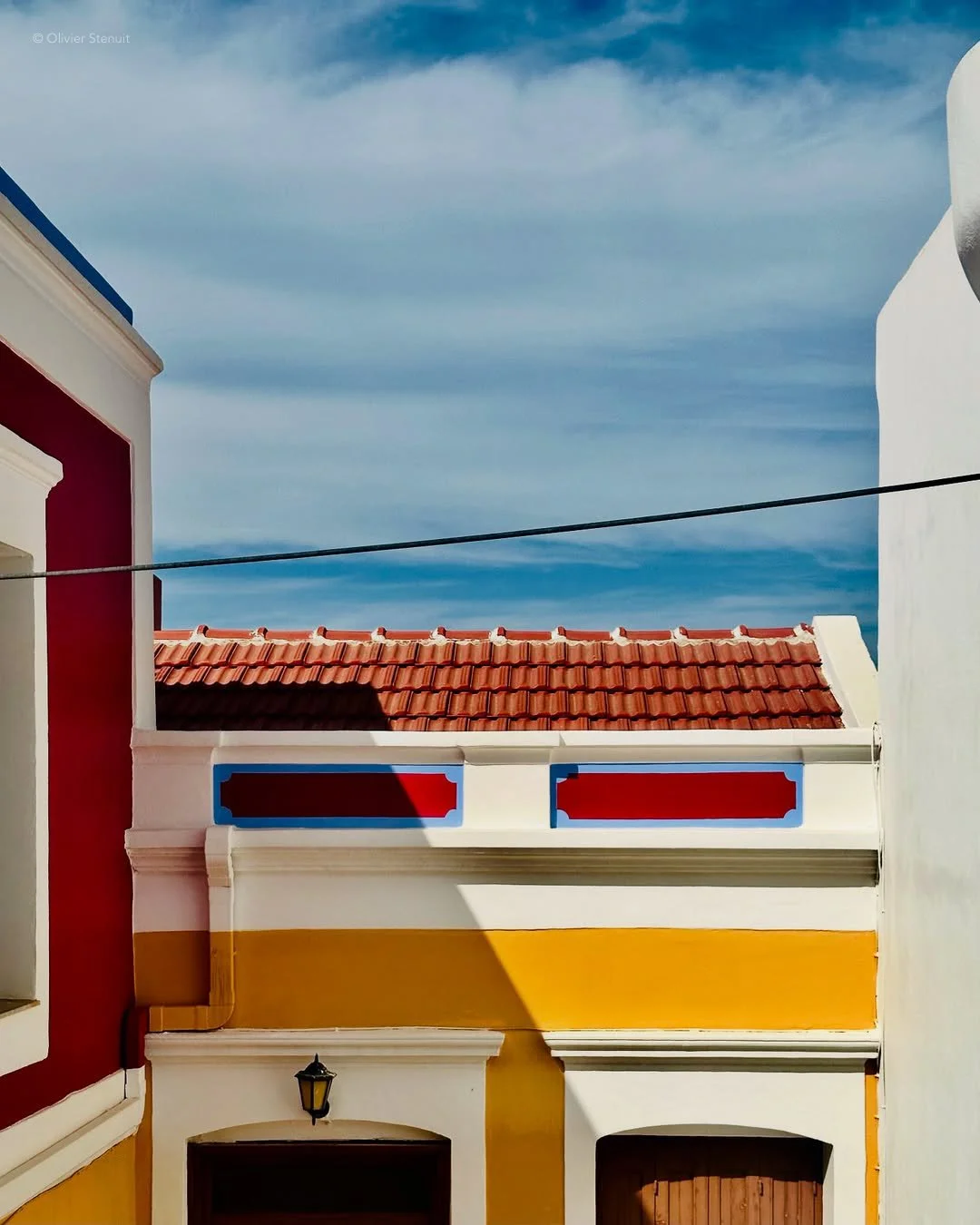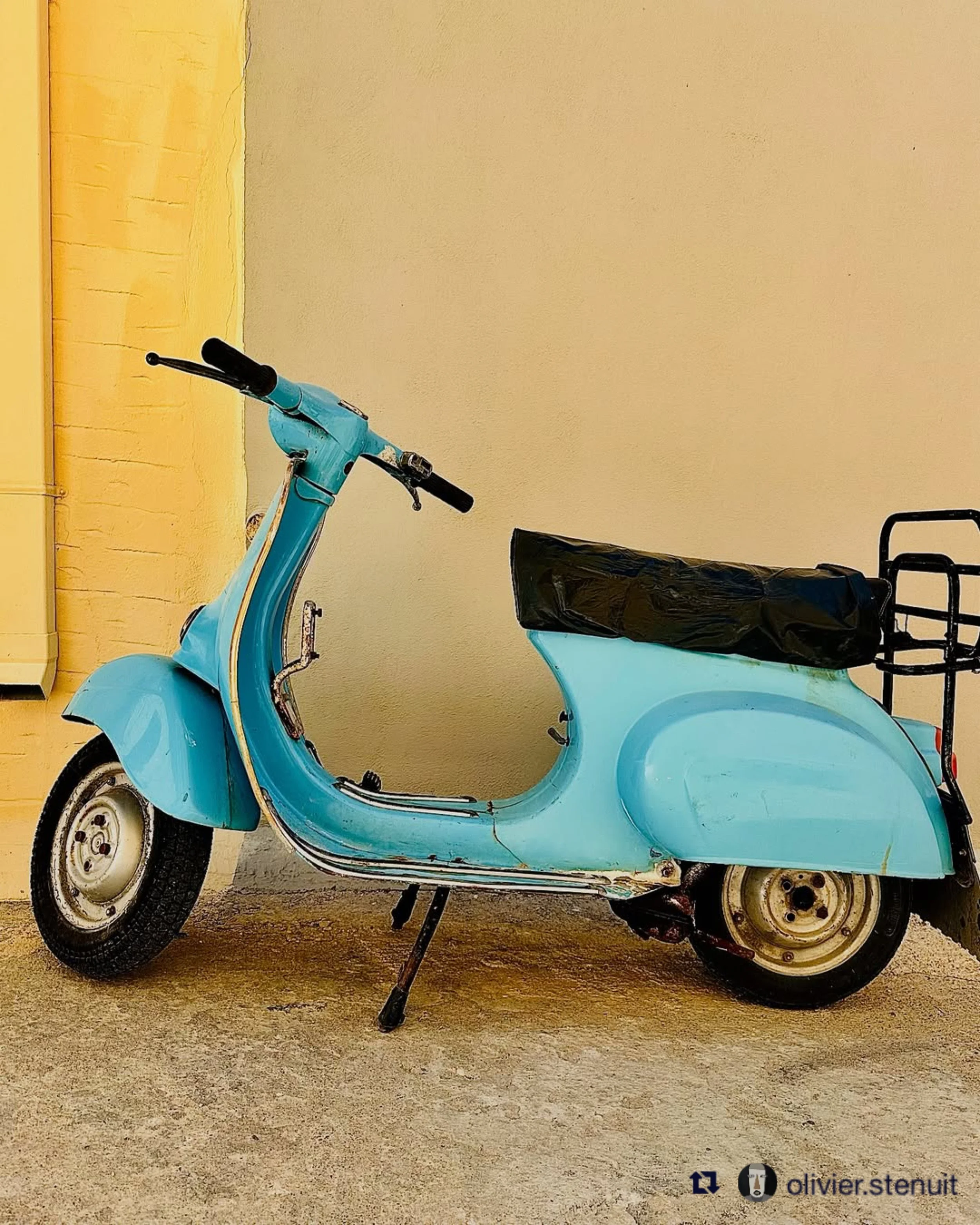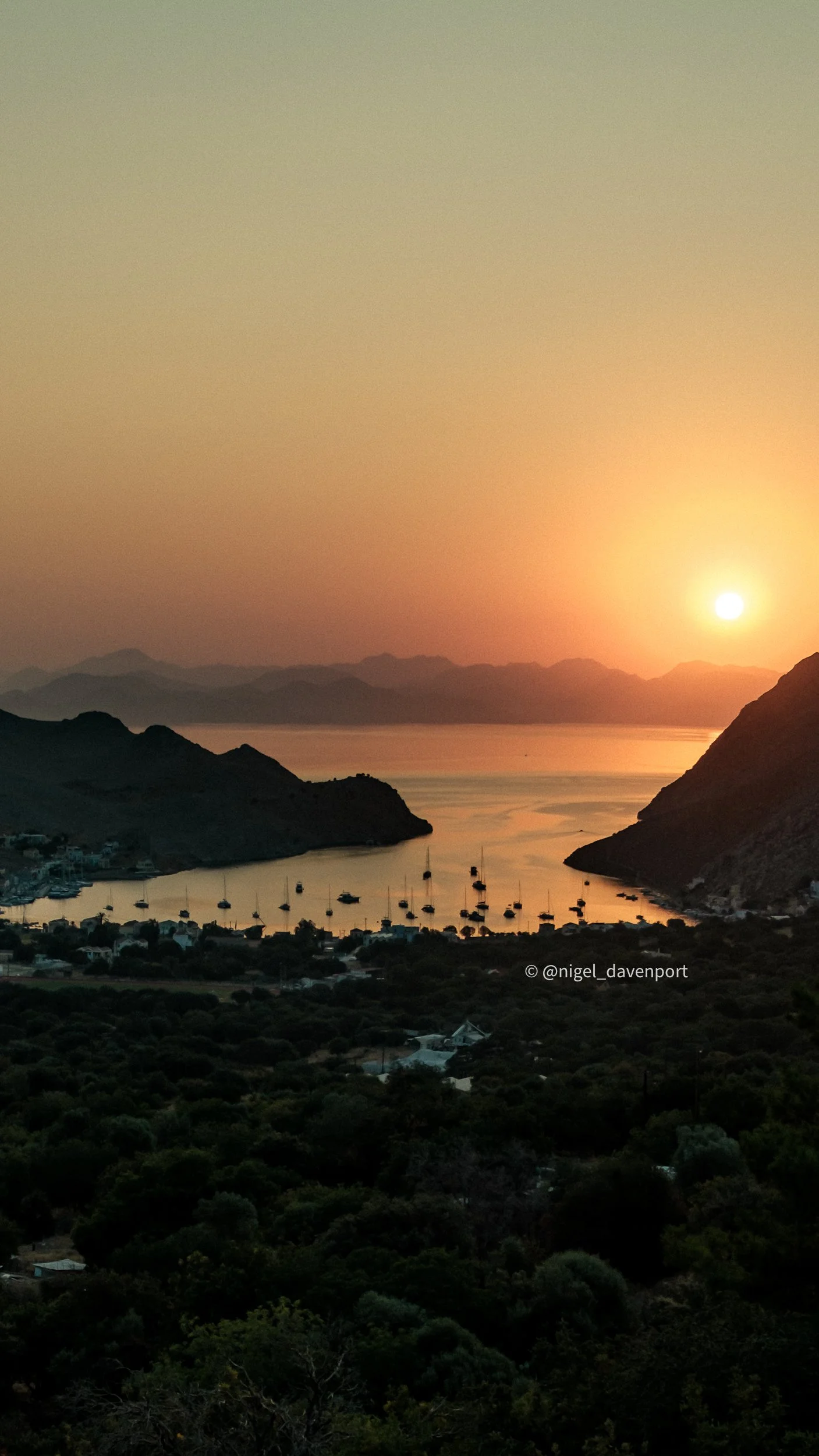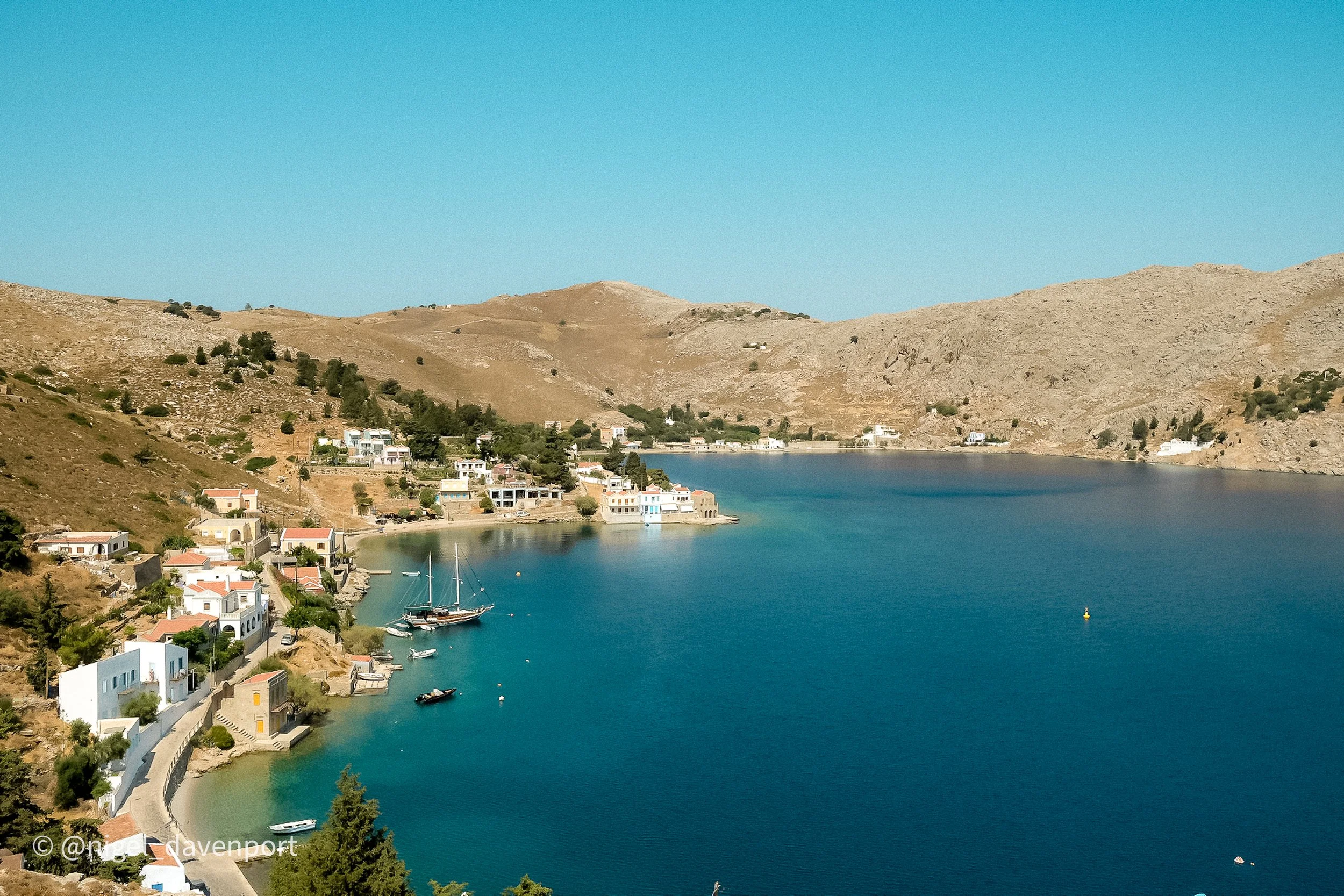SYMI • Συμη
Nestled in the Dodecanese Islands, Symi emerges like a jewel in the Aegean Sea, celebrated for its natural allure and stunning architecture, a living testament to Greek design and protected as a national monument. In the early 19th century, the town thrived with about 25,000 inhabitants, skillfully navigating trade routes - even during Byzantine times. Today, Symi's charm remains, albeit with a quaint population of around 2,000. It offers a kaleidoscope of Aegean architectural styles, where vibrant buildings cascade over an amphitheatrical landscape. Tailored for the discerning traveller, Symi exudes understated elegance; its harmonious architecture and serene ambiance form the perfect canvas for relaxation. The island's allure is further enhanced by warm locals, great cuisine, and a rich tapestry of 3,500 years of history.
The Upper Village, Chorio, is a treasure trove of Aegean architecture, boasting 2,500 houses and 14 churches along its tiny, weaving stone-paved streets. The island is surrounded by numerous beaches, crystal clear coves and are accessible via water taxis from the harbour. Its just a perfect way to travel, unwittingly slowing you down to take in the beauty. While the coastline stands rugged and resolute, the island's heart is a sanctuary of cypress and conifers, beckoning trekking enthusiasts.
Symi Island: A Brief History & Story
Symi is a small, picturesque island in the Dodecanese cluster of the southeastern Aegean Sea, renowned for its vibrant harbour, neoclassical architecture, and timeless charm. Its story is one of resilience, beauty, and cultural richness, shaped by centuries of maritime tradition and diverse influences.
Historical Roots
Symi’s history dates back thousands of years, with evidence of habitation from the Bronze Age. Throughout antiquity, it was a significant maritime hub, benefiting from its strategic location along ancient trade routes. Its name, possibly derived from the Greek word “simi” meaning “sand,” reflects the island’s geological features.
Maritime Heritage & Prosperity
In the 19th and early 20th centuries, Symi experienced a golden age driven by shipbuilding and maritime commerce. The island’s shipowners were among the wealthiest in the Mediterranean, leading to the construction of grand neoclassical mansions and public buildings that still adorn the harbour today. This era established Symi as a symbol of prosperity and elegance.
Cultural & Architectural Identity
Symi’s architecture is characterized by colourful neoclassical mansions, narrow winding streets, and a natural harbour that has sheltered sailors and visitors for centuries. The island’s cultural identity is deeply rooted in maritime traditions, local music, and storytelling, which continue to thrive amid the stunning scenery.
Modern Symi
Today, Symi is a tranquil retreat that balances its storied past with modern tourism. It’s celebrated for its authentic charm, yachting, vibrant festivals, and natural beauty - crystal-clear waters, rugged hills, and idyllic coves. Visitors are drawn to its peaceful pace, rich history, and the warm hospitality of its residents.
A Story of Resilience & Preservation
Despite its small size, Symi’s story is one of resilience—preserving its cultural heritage while adapting to contemporary life. Its story is also one of storytelling itself, with each alley, building, and view echoing the island’s maritime legends, historical triumphs, and timeless allure.
Symi is a jewel of the Aegean, whose history of maritime prosperity, architectural beauty, and resilient spirit make it a timeless sanctuary where past and present beautifully intertwine.
Nimborio - the home of Selene, is a small village and perhaps Symi’s most coveted gem
Nimborio, also known as Emporio (Εμπορειός), is a tranquil, picturesque bay located 3 km northwest of the main harbour. Steeped in history as the island’s ancient trading port, its name whispers tales of the past. A path or narrow road connects to Selene’s gates, promising unparalleled peace and solitude.
As the ancient capital; Nimborio was home to King Nireus, celebrated in Homer’s “The Odyssey” for sending three ships to Troy. Its naturally deep harbour welcomes playful dolphins, while its crystalline waters invite you to dive, paddle board, snorkel, and fish.
It is a short distance from the lively hustle and bustle of the main harbour. Along the way you can see fishing huts and traditional fishing boats dotted around the coast, along with visiting sailing boats. Nimborio has a couple of beach bars for drinks and light meals and a regular taxi boat.











